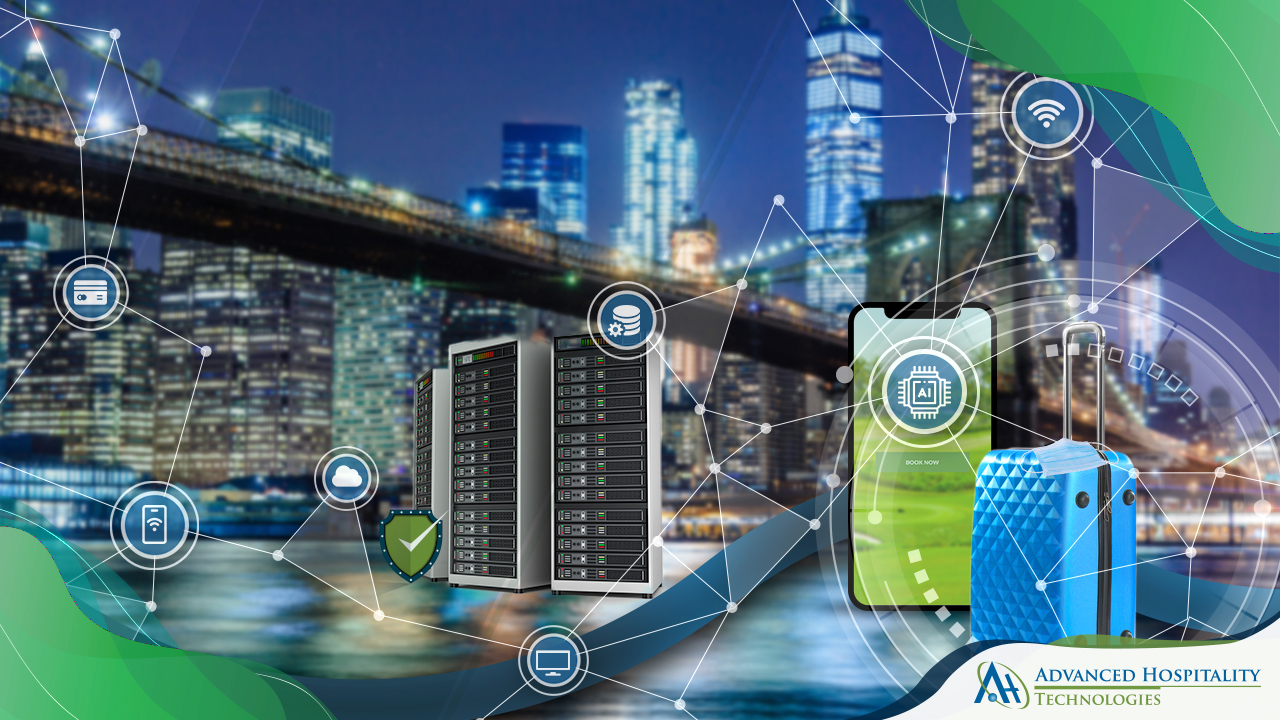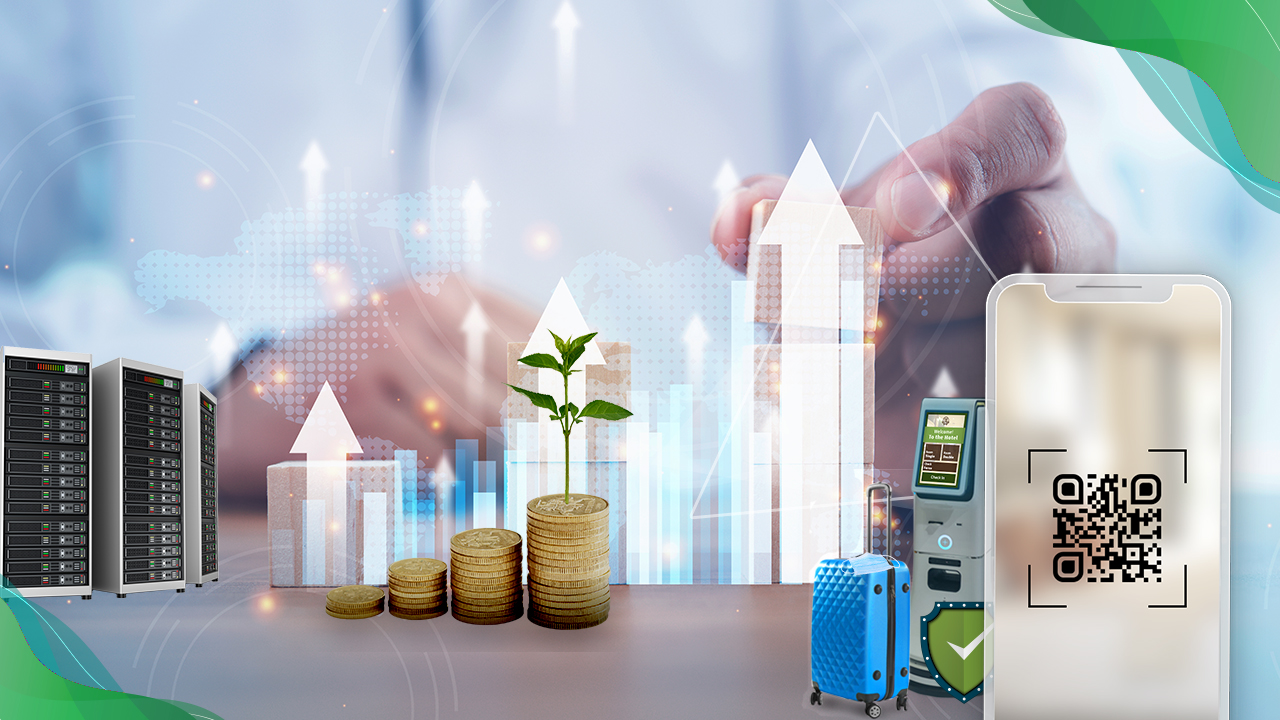Introduction
Technology infrastructure has become essential for hotels to operate efficiently and provide high-quality guest experiences. However, many hotels still rely on legacy systems that are inflexible and unable to scale. This prevents hotels from adapting quickly to changes in guest needs and business conditions. Having a scalable technology infrastructure is critical for hotels today.
Scalable technology infrastructure allows hotels to easily expand or optimize their systems as needed. With scalable infrastructure, hotels can add new software, increase bandwidth, or integrate with third-party apps without major investments. This enables hotels to implement innovations faster and provide better services for guests. Scalable infrastructure also provides cost savings, as hotels only pay for the capacity they currently need. They can seamlessly scale up or down as demand fluctuates.
With scalable infrastructure, hotels gain agility to keep up with industry disruptions and shifts in guest expectations. Travelers today want personalized, tech-enabled experiences. Having flexible, cloud-based systems allows hotels to quickly roll out mobile check-in, in-room controls, keyless entry, and other innovations guests expect. Scalable infrastructure ensures hotels have the foundation to leverage data analytics, AI, and future technologies that emerge.
Challenges of Legacy Infrastructure
Many hotels still rely on legacy on-premise infrastructure and technology systems that present several key challenges:
High upfront costs – Purchasing and installing servers, hardware, networking equipment, and software licenses requires major capital expenditures upfront. This ties up money that could be used elsewhere.
Difficult to scale up or down – Legacy systems make it complicated to scale capacity up during high demand periods or down during low occupancy. Adding or removing capacity requires purchasing more equipment and services.
Becomes outdated quickly – On-premise technology becomes outdated much faster than cloud solutions which are constantly updated. Replacing legacy systems requires more capital investment and service disruptions.
Benefits of Scalable Infrastructure
A scalable technology infrastructure provides hotels with key benefits compared to legacy on-premises systems. Most notably, it enables hotels to save costs by only paying for the resources and capacity needed at any given time. With cloud computing and on-demand services, hotels don’t have to invest in overprovisioned infrastructure upfront. They can start small and easily scale up compute, storage, and services as demand grows over time. This pay-as-you-go model is ideal for variable hotel workloads.
Scalable infrastructure also makes it easy to scale resources up or down as needed. During peak seasons or for special events, hotels can temporarily add capacity to meet higher demand. When demand decreases, excess resources can be shut down to minimize costs. This level of agility and elasticity isn’t possible with legacy infrastructure.
In addition, scalable infrastructure supports innovation and the adoption of new technologies. With cloud platforms and APIs, hotels can rapidly deploy new apps, AI services, IoT devices, and more. There’s no need for complex integrations or capital investments to try promising new technologies. This enables hotels to stay ahead of trends and quickly roll out solutions that improve the guest experience.
Overall, the flexibility, agility, and cost efficiency of scalable infrastructure provides hotels with significant advantages over traditional models. It empowers innovation while controlling costs and resources based on real-time demand.
Cloud Computing
Cloud computing refers to the delivery of computing services like servers, storage, databases, networking, software, analytics, and intelligence over the internet. This provides a simple way to access servers, storage, databases and a broad set of application services over the Internet. Cloud computing services provide organizations with the ability to acquire resources as your needs change, without investing in new infrastructure, training new personnel, or licensing new software.
There are three main types of cloud computing:
Infrastructure-as-a-Service (IaaS) – This provides access to computing resources like servers, storage, and networks on demand. IaaS providers include Amazon Web Services (AWS), Microsoft Azure, Google Compute Engine (GCE), and Oracle Cloud Infrastructure.
Platform-as-a-Service (PaaS) – This provides a platform to develop, run, and manage applications without building the infrastructure. PaaS providers include AWS Elastic Beanstalk, Microsoft Azure, Google App Engine, and Heroku.
Software-as-a-Service (SaaS) – This provides access to complete software applications over the internet. Examples include Salesforce, Office 365, G Suite, Dropbox, Slack, and more.
The major benefits of cloud computing include scalability, flexibility, reliability, and cost savings. With the cloud, organizations can scale services up and down as needed without investing in physical infrastructure. The cloud also provides flexibility to test new initiatives without long-term commitments. Cloud services are accessed over the internet and can provide improved reliability and resiliency. Finally, the cloud operates on a pay-as-you-go model, reducing overall IT costs.
Software as a Service
Software as a Service (SaaS) solutions have become increasingly popular for hotels looking to scale their technology. SaaS provides web-based access to software applications, removing the need for hotels to install and maintain software locally.
Some common examples of SaaS applications in hospitality include:
Property Management Systems (PMS) – Cloud-based PMS solutions like Oracle Hospitality Opera, Cloudbeds, RoomMaster, and more provide core operational functionality through the web.
Central Reservation Systems (CRS) – Enable two-way connectivity between hotels, online travel agencies, call centers, and other booking channels. Popular CRS SaaS solutions include SynXis, TravelClick, and DHISCO.
–Customer Relationship Management (CRM) – Manage guest profiles, preferences, interactions and marketing campaigns. SaaS CRM systems like Salesforce, Zendesk, and HubSpot integrate with PMS and other data sources.
Channel Managers – Automate inventory and rate distribution across OTA, metasearch and other third-party sites. Examples include SiteMinder, Derbysoft, and AxisRooms.
The SaaS model provides numerous advantages for hotels:
– No upfront investment in software licenses and infrastructure. Pay per use or monthly/annual subscriptions.
– Automatic updates and maintenance handled by the vendor. No need for hotels to manually install patches and upgrades.
– Access from anywhere via the web. Supports flexible and mobile workforce.
– Quick implementation measured in weeks rather than months.
– Scales easily as demand fluctuates. Add or remove seats instantly.
When evaluating SaaS vendors, hotels should look for solutions that offer strong integration capabilities, data security, customization options, and flexibility to switch systems if needed. SaaS enables hotels to leverage advanced technology and scale their operations efficiently.
Hybrid Infrastructure
A hybrid infrastructure combines the best of on-premises infrastructure with the flexibility and scalability of the cloud. This blended model allows hotels to keep critical systems on-premises while taking advantage of cloud services. The hybrid approach provides the ability to scale compute and storage resources on demand.
In a hybrid infrastructure, core systems like the property management system, point of sale, and telephone systems remain on-premises. This ensures full control and security for mission-critical applications. However, guest-facing systems like the website, reservation system, and guest WiFi can run in the cloud. This allows these customer-focused services to scale elastically based on demand.
Other systems can start on-premises and then migrate to the cloud over time. For example, hotels may choose to keep their data warehouse on-premises initially but eventually transition it to a cloud data platform. This gradual shift to the cloud allows time for testing and ensures minimal disruption.
Achieving the optimal balance between on-premises and cloud depends on each hotel’s unique needs and constraints. The hybrid model provides flexibility to find the right mix. Hotels can take a phased approach starting with non-critical systems before moving core systems to the cloud. With careful planning, hotels can create a hybrid environment that maximizes scalability while retaining control over critical systems.
Network and Connectivity
A hotel’s network infrastructure is critical for supporting guest needs and emerging technologies. High-speed, reliable internet and WiFi is now considered an essential amenity for travelers. Outdated network equipment can result in spotty connections, slow speeds, and frustration for guests. Scalable networks built on SD-WAN, fiber, and high-capacity wireless access points enable hotels to provide fast, stable internet to all rooms without disruption.
Network security is also paramount in hospitality. Guests expect their data and devices to be protected when connecting to hotel networks. A centralized next-gen firewall, segmentation, and network monitoring provides enhanced visibility and protection against cyber threats targeting customer information and operations.
Finally, emerging IoT devices and building automation rely on robust connectivity. Keycards, digital door locks, lighting controls, and more operate on IP networks. As hotels add more connected devices, the network infrastructure must evolve to manage increased traffic and connectivity demands. A future-proof network design ensures hotels can support guest-facing and operational IoT innovations.
Data and Analytics
With scalable technology infrastructure, hotels can centralize data from various systems like property management, point of sale, and customer relationship management into a single data warehouse. This provides the foundation for robust business intelligence and analytics capabilities.
Dashboards and reporting tools allow hotel managers real-time visibility into key metrics across the property or brand. This empowers data-driven decision making to optimize operations, marketing, and the guest experience. Scalable analytics platforms also enable predictive modeling to identify trends and opportunities.
As data volumes grow exponentially, data security and compliance become critical. Scalable infrastructure allows implementing enterprise-grade security protocols and access controls. It also aids compliance with regulations like GDPR by consolidating data in a centralized repository with role-based access and audit logs.
With scalable infrastructure, hotels gain a future-proof analytics foundation capable of leveraging emerging innovations like AI and machine learning algorithms. The technology readily adapts to changing business needs and ever-growing data.
Adopting New Technologies
The hospitality industry is rapidly adopting new technologies to improve operations, enhance the guest experience, and drive revenue. However, implementing emerging technologies successfully requires careful evaluation, testing, and change management.
Emerging Technologies
Exciting technologies like artificial intelligence, machine learning, chatbots, automation, virtual reality, and Internet of Things sensors are transforming hotels. AI powers revenue management systems to optimize pricing. Chatbots handle routine guest inquiries to free up staff. Sensors track room occupancy to improve energy efficiency. Evaluating how these innovations align with your brand and business objectives is critical.
Evaluating and Testing
Before wide-scale implementation, thoroughly test new technologies. Run pilot programs in a limited number of properties to identify any issues. Examine the impact on staff workflows and training requirements. Assess guest feedback and measure success metrics like increased revenue or satisfaction scores. Testing minimizes disruption while allowing you to refine systems.
Change Management
Any technology transformation requires thoughtful change management. Clear communication, extensive training, and engagement from all stakeholders ensures smooth adoption. Provide reassurance around job security and frame technology as enabling employees to focus on high-value tasks. Celebrate successes to build support. With careful change management, your team will embrace new technologies.
Conclusion
Scalable technology infrastructure offers tremendous benefits for hotels of all sizes. By adopting cloud computing, software as a service, hybrid infrastructure models and continually integrating new innovations, hotels can meet guest demands, improve operations, harness data insights and position themselves for future growth. In summary, scalable technology infrastructure gives hotels the agility and capabilities to keep pace with industry change. By making smart investments, hotels of all sizes can deliver amazing guest experiences, achieve operational excellence, and position themselves for the future.




